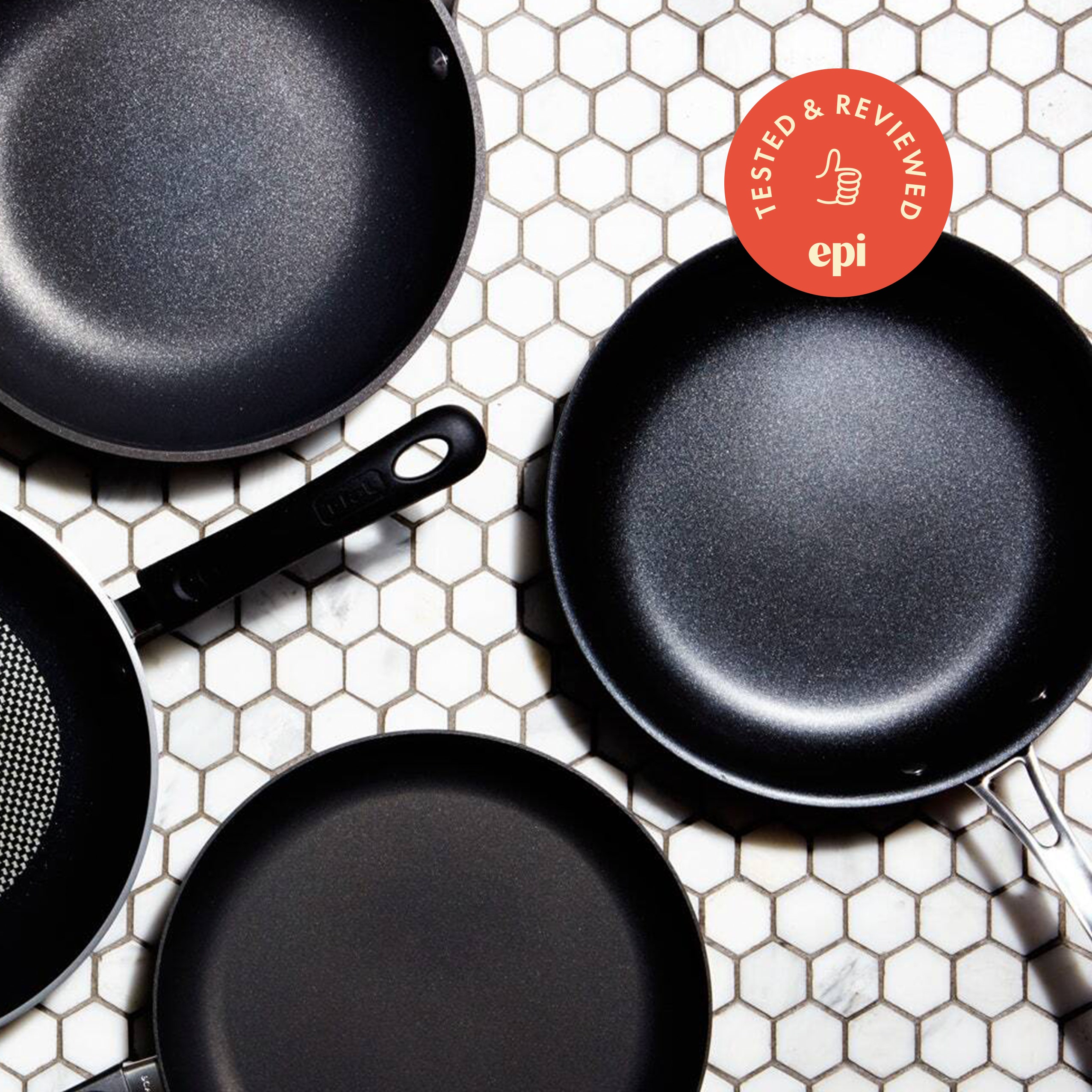Nonstick cookware is a kitchen essential, but using the wrong utensils can damage its coating and reduce its lifespan. Choosing the best cooking utensils for nonstick cookware ensures longevity, scratch resistance, and better cooking performance.
In this guide, we will cover the best materials, top recommended utensils, buying factors, care tips, and FAQs to help you make the right choice.
Why Should You Use Specific Utensils with Nonstick Cookware?
Nonstick cookware requires special utensils to maintain its coating integrity, heat distribution, and scratch resistance. Here’s why you should avoid metal utensils and choose softer alternatives:
- Prevents scratches and wear – Nonstick coatings are delicate and can be easily damaged by sharp edges.
- Enhances durability – Using non-abrasive utensils ensures your pans last longer.
- Improves cooking efficiency – Flexible materials like silicone and nylon allow better scraping and stirring.
Best Materials for Nonstick Cooking Utensils
Choosing the right material is crucial for protecting your nonstick cookware. Here are the best and worst materials:
✔ Best Materials:
- Silicone – Heat Resistant & Flexible
- Withstands temperatures up to 600°F.
- Non-toxic, BPA-free, and gentle on cookware.
- Ideal for stirring, flipping, and scraping.
- Wood – Durable & Eco-Friendly
- Natural and biodegradable.
- Does not conduct heat or scratch surfaces.
- Great for stirring sauces and soups.
- Nylon – Affordable & Lightweight
- Heat-resistant up to 400°F.
- Gentle on nonstick surfaces.
- Suitable for everyday cooking.
❌ Materials to Avoid with Nonstick Pans:
- Metal (Stainless Steel, Aluminum, Copper) – Scratches and ruins the nonstick coating.
- Hard Plastic – Can melt at high temperatures and release chemicals.
Top 10 Nonstick Cooking Utensils
Here are the best utensils designed for nonstick cookware:
-
Wooden Spoon
A versatile, classic kitchen tool that won’t scratch or damage cookware. Perfect for stirring soups, sauces, and batters.
-
14-Piece Silicone Utensil Set
Includes spatulas, ladles, whisks, and spoons – all heat-resistant, flexible, and safe for nonstick pans.
-
Supoon (Spoon + Scraper Hybrid)
An innovative spoon with a built-in scraper, great for scraping every bit of food from pans and bowls.
-
Spatula
A silicone spatula is essential for flipping delicate foods like eggs, pancakes, and fish without damaging the pan.
-
Smood Masher
A unique spring-loaded potato masher that’s nonstick-friendly and easy to clean.
-
Silicone Balloon Whisk
Unlike metal whisks, this soft, flexible whisk won’t scratch pans while mixing batters and sauces.
-
Chopula (Flexible Chopping Spatula)
A thin-edged spatula that can chop and flip food, ideal for stir-fries and omelets.
-
Pastry Brush
Perfect for glazing pastries, basting meat, and coating foods with oil or butter without scratching cookware.
-
Tongs Set
A silicone-tipped tongs set provides a firm grip while flipping food without scratching the pan.
-
Pasta Fork
A nylon or silicone pasta fork makes it easy to serve pasta without damaging delicate surfaces.

What to Look for When Buying Nonstick Utensils
Before buying, consider these key factors:
-
Material and Coating
Ensure your utensils are BPA-free, non-toxic, and heat-resistant to prevent chemical leaching.
-
Heat Resistance
Choose utensils that can withstand at least 400°F – 600°F for safe cooking.
-
Maintenance and Durability
Opt for dishwasher-safe and easy-to-clean materials like silicone and wood.
-
Intended Use
Different utensils serve different purposes – consider your cooking habits and needs.
-
Price and Affordability
Invest in high-quality sets rather than replacing cheap, worn-out utensils frequently.
How to Care for Nonstick Cooking Utensils
Proper maintenance extends the lifespan of your utensils and cookware:
- Hand wash when possible – Some utensils are dishwasher-safe, but wooden and silicone tools last longer with handwashing.
- Avoid soaking wooden utensils – This prevents warping and cracking.
- Store properly – Keep utensils in a drawer organizer or hanging rack to prevent bending.
- Replace worn-out utensils – If a silicone or nylon tool starts to peel, replace it immediately.

How We Chose the Best Nonstick Utensils
We selected these utensils based on:
- Expert testing and durability analysis.
- Customer reviews and feedback.
- Heat resistance, non-toxicity, and ease of use.
Find the Best Utensils for Your Cooking Style
Choosing the right utensils depends on your cooking habits:
- For busy home cooks – A 14-piece silicone set covers all needs.
- For minimalist chefs – A wooden spoon, spatula, and tongs are sufficient.
- For bakers – A silicone whisk and pastry brush are must-haves.
Frequently Asked Questions
- Are nonstick utensils safe for cooking?
Yes, as long as they are made from BPA-free, food-grade materials like silicone, wood, or nylon.
- What is the best material for nonstick utensils?
Silicone and wood are the top choices due to their heat resistance, flexibility, and non-abrasive properties.
- Can nonstick utensils withstand high heat?
Silicone can handle up to 600°F, but nylon has a lower threshold of around 400°F.
- Can I put nonstick utensils in the dishwasher?
Most silicone and nylon utensils are dishwasher-safe, but wooden utensils should be hand-washed to avoid damage.
Final Thoughts: Choosing the Right Utensils for Your Kitchen
Using the right nonstick-safe utensils ensures your cookware stays scratch-free and lasts longer. Silicone, wood, and nylon tools provide excellent durability, safety, and cooking efficiency.
👉 Ready to upgrade your kitchen utensils? Choose from the best heat-resistant, scratch-proof, and long-lasting tools today!
